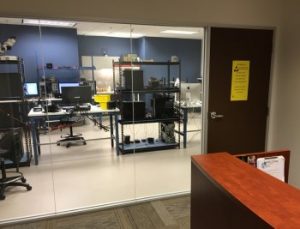 Microsoldering is a highly specialized technique in electronics repair that demands precision, expertise, and specialized equipment. It involves repairing small components on a circuit board, which may be no larger than a grain of sand. These components are crucial for a device’s operation, and even minor damage can lead to malfunctions and data loss.
Microsoldering is a highly specialized technique in electronics repair that demands precision, expertise, and specialized equipment. It involves repairing small components on a circuit board, which may be no larger than a grain of sand. These components are crucial for a device’s operation, and even minor damage can lead to malfunctions and data loss.
To perform microsoldering, technicians utilize a high-powered microscope to magnify the circuitry. The magnification provides a clear view of the components and their connections. Repairs are performed using a specialized soldering iron with an exceptionally fine tip, along with specialized solder alloys with precise melting points.
In recent years, microsoldering has become a more important tool for data recovery engineers. Below, we’ll explain the basics. To set up a risk-free media evaluation or learn about our services — all of which are supported by our no data, no charge guarantee — submit a case online or call 1-800-237-4200.
Microsoldering and Data Recovery
In data recovery laboratories, microsoldering is used to address physical damage to storage devices and their associated circuitry. It’s not always necessary; engineers generally prefer to replace larger components using donor media.
However, microsoldering is essential for addressing certain issues:
- Identifying and Replacing Faulty Components: Microsoldering allows technicians to pinpoint faulty components on a circuit board, such as resistors, capacitors, diodes, and even tiny integrated circuits (ICs). These components can be carefully removed and replaced with new ones to restore the circuit board’s functionality.
- Repairing Damaged Traces: Circuit boards contain delicate conductive pathways called “traces” that carry electrical signals. Physical damage can break or damage these traces, interrupting the flow of data. Microsoldering enables technicians to rebuild or bridge broken traces, re-establishing the connections.
- Reballing BGA Chips: Ball Grid Array (BGA) chips are commonly used in modern electronics. These chips connect to the circuit board via an array of tiny solder balls. Over time (or due to physical stress), these connections can crack or fail. Microsoldering techniques like “reballing” allow technicians to remove the BGA chip, clean the connection points, and attach fresh solder balls, effectively re-establishing a solid connection.
Examples of Microsoldering in Data Recovery:
- Mobile Device Recovery: In smartphones and tablets, microsoldering can be used to repair or replace damaged charging ports, power management ICs, memory chips (eMMC or UFS), and components related to the display or touch functionality, all of which can impact data accessibility.
- SSD Data Recovery: Microsoldering is crucial for SSD recovery, enabling technicians to replace faulty controller chips, repair damaged NAND flash memory chips, and address issues within the complex circuitry that manages data storage and retrieval.
- Hard Drive Recovery: In hard drives, microsoldering can be used to repair or replace damaged read/write heads, motor controllers, and other components that are essential for the drive’s operation and data access. Engineers weigh a number of factors when deciding how to treat physical hard drive issues, but simple “PCB swaps” aren’t possible with modern drives.
Why Professional Expertise is Essential

A Datarecovery.com laboratory.
Microsoldering is a highly intricate procedure that requires specialized equipment, advanced skills, and a controlled environment. Microscopes with high magnification and excellent resolution are essential for visualizing the minute components. Precision soldering stations with temperature control and specialized tips are also necessary.
Additionally, microsoldering requires extensive knowledge of electronics, circuit board repair, and soldering techniques. Technicians must be able to diagnose the fault, identify the affected components, and execute the repair with precision to avoid causing further damage. Needless to say, if a device holds the only copy of important data, you’ll want an experienced engineer performing the repairs.
Microsoldering is best performed in a cleanroom environment to prevent dust and other contaminants from interfering with the delicate circuitry. Electrostatic discharge (ESD) precautions are also crucial to avoid damaging sensitive electronic components. Professional data recovery labs have the necessary controls to limit damage — and optimize the chances of a wholly successful recovery.
Professional Data Recovery Services with a No Data, No Charge Guarantee
If you are experiencing data loss, seeking professional assistance is crucial. Attempting repairs without the necessary expertise and equipment can lead to further damage and permanent data loss.
Datarecovery.com provides free evaluations, and each of our locations is fully outfitted with cleanrooms, advanced firmware repair equipment, soldering stations, and other essential technologies. To learn about our services or set up a free evaluation, submit a case online or call 1-800-237-4200.




